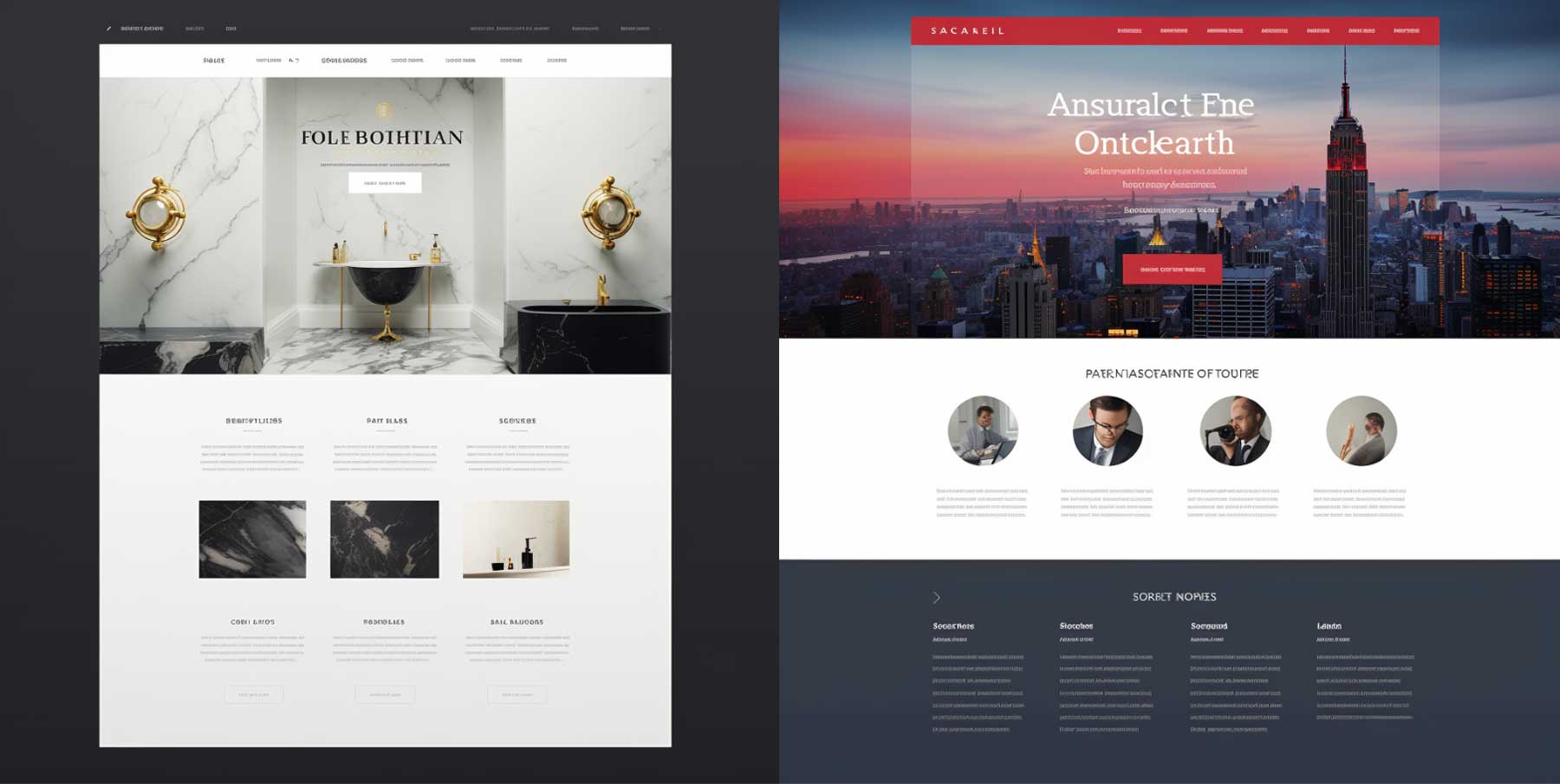The Ultimate Guide to Website Design: Tips for Creating Stunning Websites
The Ultimate Guide to Website Design: Tips for Creating Stunning Websites
Blog Article
Modern Internet Site Design That Catches Interest and Converts
In a significantly digital landscape, contemporary web site design has actually arised as a critical factor in capturing customer attention and driving conversions. As we explore these vital elements, it becomes clear that recognizing their interaction can significantly influence a web site's performance and user fulfillment.
Significance of Visual Hierarchy
Aesthetic power structure is an important element in web site layout, as it overviews individuals' focus and enhances their general experience. By strategically organizing content, developers can guide users to the most crucial info first, thereby increasing interaction and boosting functionality.
Integrating a sensible flow in web content arrangement is crucial; for instance, positioning one of the most vital information on top of a web page fosters prompt recognition. Constant use of typography, such as differing font sizes and designs, assists develop a clear material framework. This organization not just help in navigating but likewise constructs depend on, as customers feel a lot more comfortable when they can conveniently discover what they are seeking.
Eventually, a well-executed aesthetic hierarchy not just improves aesthetic appeal but likewise dramatically impacts user actions. By prioritizing crucial components and making sure a smooth experience, developers can successfully convert site visitors into consumers, enhancing the value of this foundational design principle in contemporary web site growth.
Responsive Design for All Gadgets
Producing a smooth experience throughout different devices is vital in today's digital landscape, where users accessibility websites from smartphones, desktops, and tablets alike. Receptive layout is a crucial method that makes sure sites adapt fluidly to various screen positionings, sizes, and resolutions. By using flexible grids, images, and CSS media queries, developers can develop formats that maintain visual integrity and capability, no matter the gadget being used.
The significance of responsive layout extends past looks; it straight affects individual involvement and conversion rates. A site that functions well on all devices urges longer check outs and lowers bounce rates, as customers are more probable to communicate with material that is very easy to navigate. Search engines, specifically Google, focus on mobile-friendly sites in their rankings, making receptive style a vital element of search engine optimization (SEO)
Integrating responsive style not just improves user experience but likewise improves the development procedure. By creating a single site that functions throughout devices, services can conserve time and resources compared to creating different mobile and desktop computer variations. Inevitably, receptive design is an essential strategy for contemporary web site style, guaranteeing accessibility and satisfaction for all customers, despite their device.
Engaging Interactive Aspects
While a responsive design lays the foundation for a practical web site, including interesting interactive aspects is vital for capturing individual attention and fostering much deeper connections. Website Design. Interactive components, such as computer animations, quizzes, and clickable infographics, produce an extra vibrant customer experience, encouraging visitors to spend even more time on the site
Incorporating interactive attributes can additionally assist customers with complex information, making it easier to absorb web content. For instance, interactive sliders can show item variations, while embedded videos can offer demos or testimonials that resonate greater than fixed images or text. Additionally, gamification strategies, like advice rewards for finishing jobs or engaging with web content, can boost customer inspiration and retention.
Reliable use interactive components not only enriches the customer experience however can also lead to higher conversion rates. By making interactions enjoyable and informative, businesses can grow a feeling of commitment and trust with their audience. It is vital to balance interactivity with performance; overly intricate attributes might impede site rate, negatively influencing customer satisfaction. Inevitably, integrating well-designed interactive aspects can substantially raise a site's effectiveness, driving engagement and conversions in today's competitive electronic landscape.
Structured Navigating Practices
Reliable navigating is a foundation of any type of successful internet site, as it straight affects individual experience and content ease of access. Structured navigation practices guarantee that users can conveniently situate information, boosting their communication with the website. A well-structured navigation food selection need to be intuitive and simple, normally including a limited variety of key categories to avoid overwhelming visitors.
To achieve streamlined navigation, designers should focus on a hierarchical structure that rationally arranges web content. Carrying out breadcrumb tracks can provide customers with context about their existing area within the site, permitting smooth backtracking. Furthermore, using drop-down food selections can properly conserve area while still supplying access to subcategories.
Receptive style is crucial, as navigation ought to be functional throughout all tools (Website Design). Mobile individuals, in particular, take advantage of touch-friendly food selections and retractable sections that maintain usability without jeopardizing appearances

Reliable Call-to-Action Methods
A well-crafted call-to-action (CTA) is vital for directing users towards wanted results on a site, as it urges them to engage with material or make a purchase. To optimize their performance, CTAs need to be clear, engaging, and tactically positioned throughout the site.
First, make use of action-oriented language that connects urgency or worth, such as "Begin," "Sign up with Now," look at this site or "Case Your Price cut." This language not just encourages users but also sets clear assumptions concerning the next actions.
Second, think about design components; CTAs must stick out aesthetically with contrasting shades, ample whitespace, and popular positioning. A button that is simple to see and click increases her comment is here the probability of user interaction.
Additionally, individualizing CTAs based on individual behavior or demographics can considerably improve involvement. Customized messages resonate much more with customers, driving higher conversion rates.

Final Thought
These parts collectively improve customer experience, making sure that site visitors continue to be engaged and encouraged to discover web content even more. By prioritizing these design principles, organizations can dramatically improve individual retention and conversion prices, ultimately leading to higher success in the electronic landscape.
In an increasingly digital landscape, modern-day internet site layout has arised as an essential element in capturing customer focus and driving conversions.Visual pecking order is an important component in website layout, as it guides individuals' focus and enhances their general experience.The relevance of responsive design prolongs past visual appeals; it straight influences user involvement and conversion rates.Integrating receptive design not just improves user experience yet additionally simplifies the advancement procedure. Eventually, receptive layout is a fundamental technique for modern-day internet site design, ensuring access and contentment for all individuals, no matter of their device.
Report this page